The term “black & tan” usually refers to a black-based tan point pattern. Dogs with this pattern have a black coat with tan markings on their eyebrows, cheeks, chest, and undersides.
Tan Point Colors
Dogs need to be able to express their tan point allele (some use the new allele label ASIPBB or BB for at). They have to be ky/ky combined with either a mask Em/- or a wild type allele E/-.
Having a brindle allele (kbr/- at/-) will cause brindle points.
The color of their eumelanin is determined by the B locus and D locus.
The color of their phaeomelanin markings is caused by red intensity.

“Black & Tan”
E/- ky/ky at/- B/- D/-

“Brown & Tan”
E/- ky/ky at/- b/b D/-
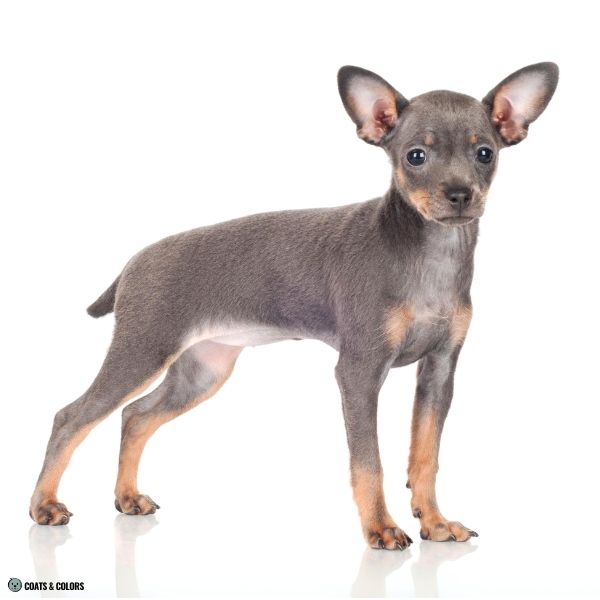
“Blue & Tan”
E/- ky/ky at/- B/- d/d

“Lilac & Tan”
E/- ky/ky at/- b/b d/d
Black-Based Tan Point Pattern
Dogs with a black and tan pattern will have a mostly black coat with distinct tan markings.

Tan point is an A locus pattern. It is responsible for color placement.
It tells pigment cells where to make eumelanin (black) and where to make phaeomelanin (tan).
Would you like to read more about pigment types?
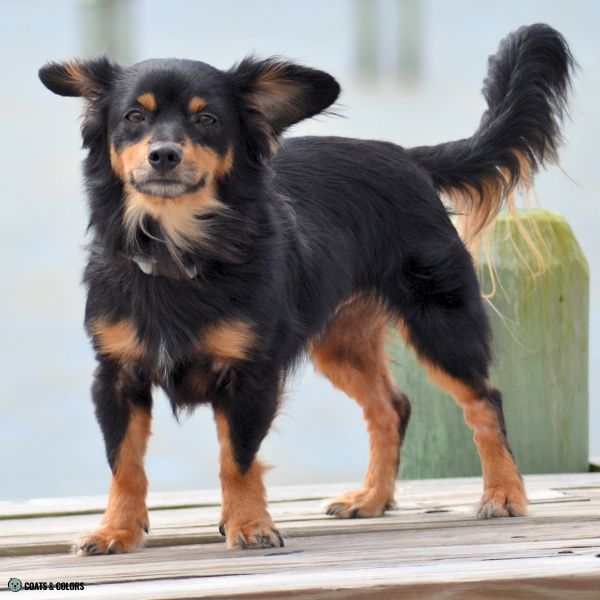
Dogs with any kind of black-based pattern have black eumelanin pigment (B/- D/-).
Black is the default color of eumelanin.

The black eumelanin also affects the nose, whiskers, eye rims, lips, nails, paw pads, or skin pigment which will all be black. Most black-based dogs have brown eyes.

Tan markings are located in the same areas across all dogs with this pattern.
A typical black and tan dog has tan pips above its eyes. He has tan on his cheeks and sides of his muzzle, these markings extend into a tan patch on the throat. Most dogs have tan markings on their chest. The paws, lower legs, and inside of the legs is also tan. Another marking is found under the tail.
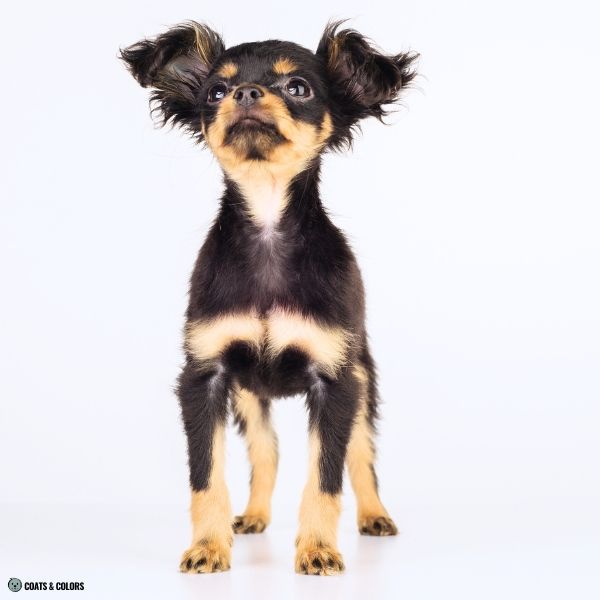
The black under the eyes can, but does not have to, taper towards the cheeks. When the pointed end meets the black on the head, sometimes all that remains is a small tan dot on the cheeks.




Tan point dogs have some tan inside their ears, but will keep a black trim around the inner edges.
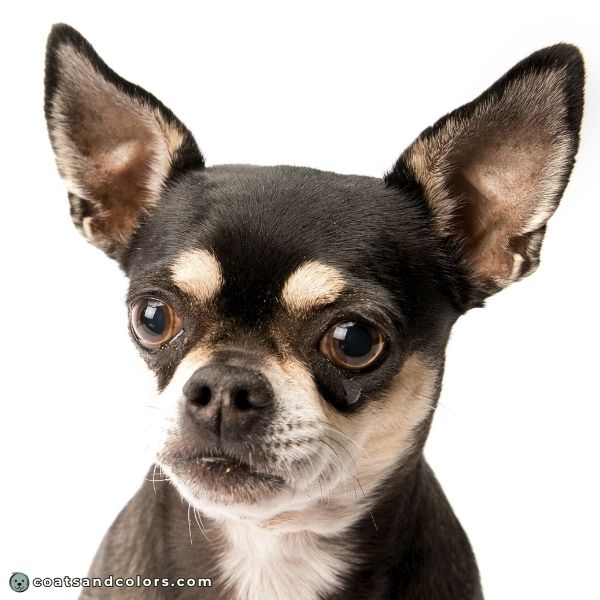
Tan markings on the muzzle leave a black nose bar running down the bridge of the nose.

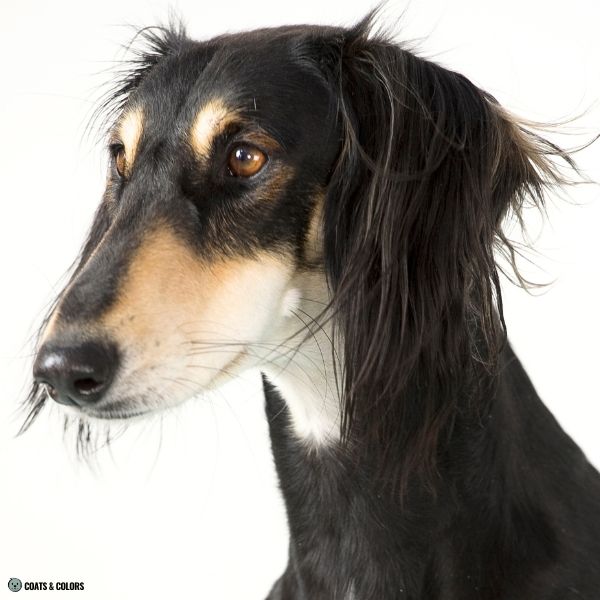
The chest tan markings may just be two small dots at the tips of the shoulders. They often form two symmetrical triangles. In larger markings, these spots may connect into a tan patch across the chest.


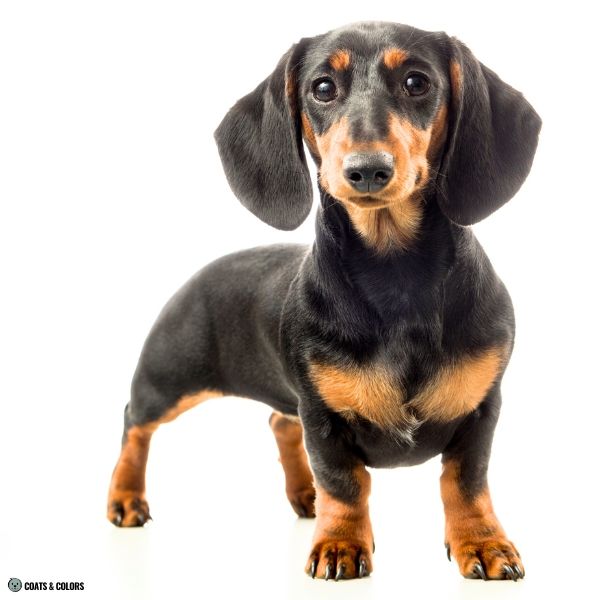
With this pattern, you will see some black running down the front of the legs.

Many dogs with a tan point pattern have toe pencilling or tar heels.
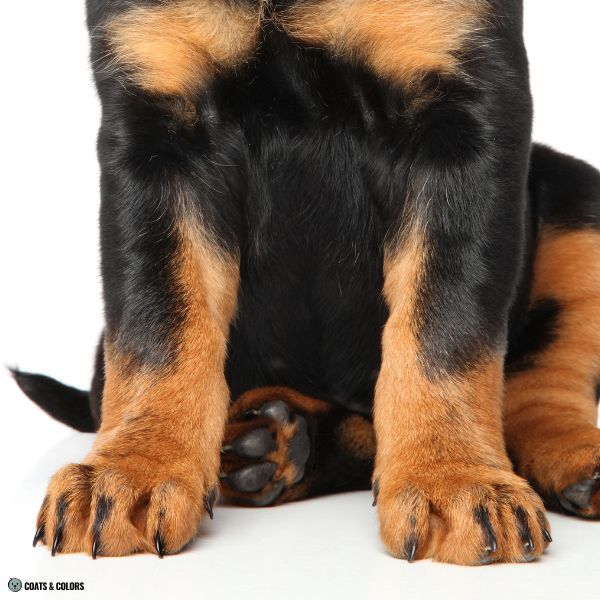
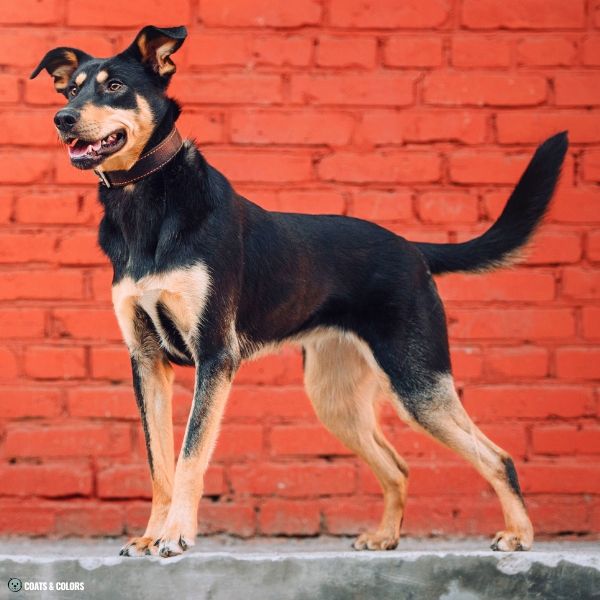
The tan markings are not always tan-colored.
Their intensity can vary from pale cream to an intense red color. Some breeds call them red markings or rust markings. And in Mini Schnauzers, dogs are called black and silver for their whitish pigment.
Each breed has their own preference.
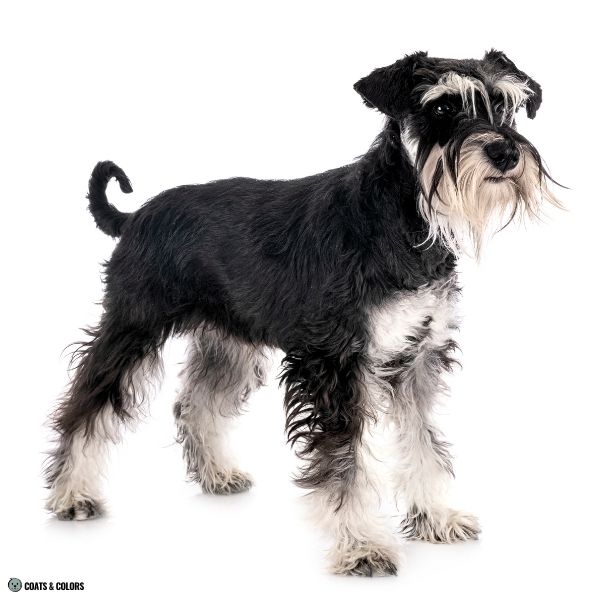
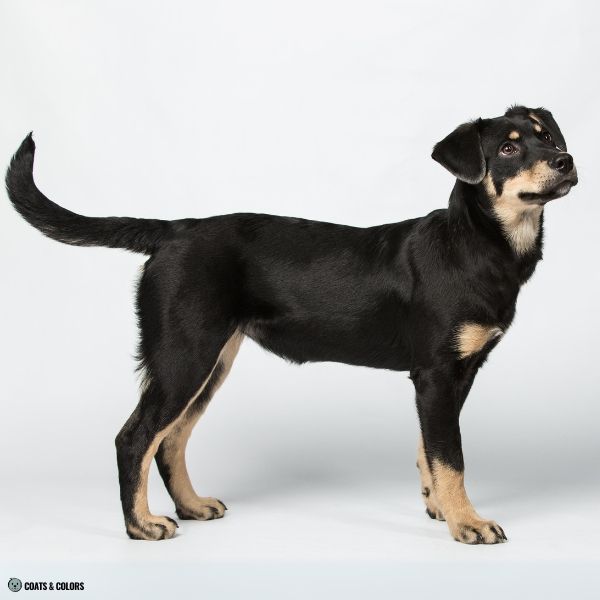

Tan markings can have very crisp edges. Or they can be smutty with less well-defined rims. Some darker dogs may have very small sooty tan markings.
Smallish tan markings often happen when a dog carries recessive black (at/a). But small or sooty markings also happens in breeds that don’t even have recessive black.

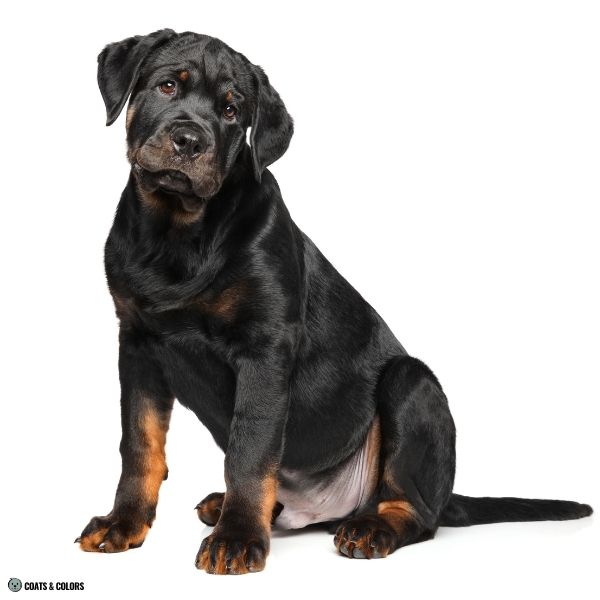

Some dogs have large tan markings, e.g. big round eyebrow pips. Puppies that carry recessive red (E/e) or maybe domino (E/eG or E/eA) often have larger markings than their E/E siblings.


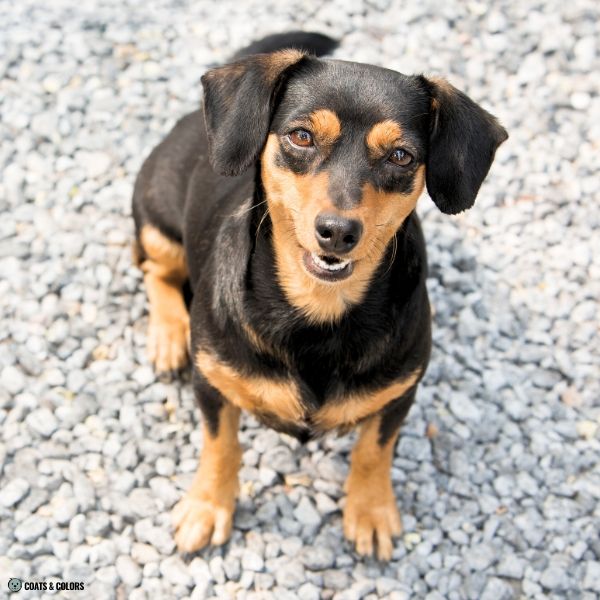
The black areas of the coat are not always solid black. It’s quite normal for dogs with this pattern to have some lighter hairs, pale hair roots, or lighter undercoat peeking through.
Some breeds have simply opted to select against “bad black” and for “better pigment” to produce solid black hairs and dark undercoat instead of the normal pale roots and light undercoat.

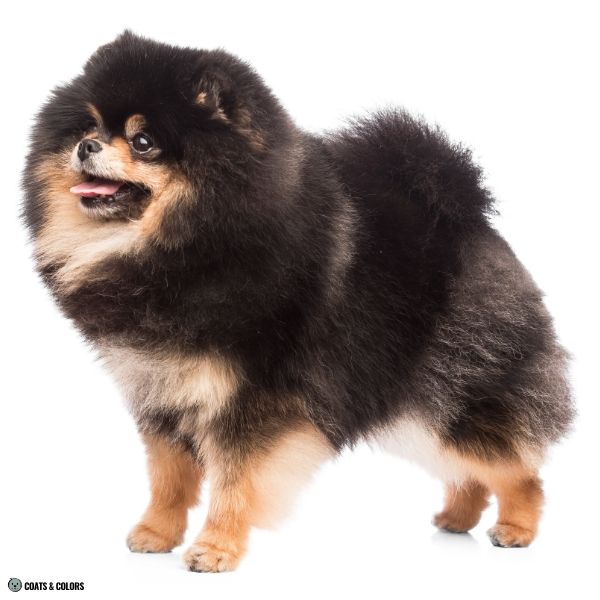

Overall, tan bleed-through is more likely to be visible in some coat structures than others.
Very longhaired dogs, for example, are more likely to have their light undercoat showing through. This can be particularly visible behind the shoulder blades, on the sides of neck, and in their trousers.
But whatever causes pale roots or undercoat is not a testable trait.
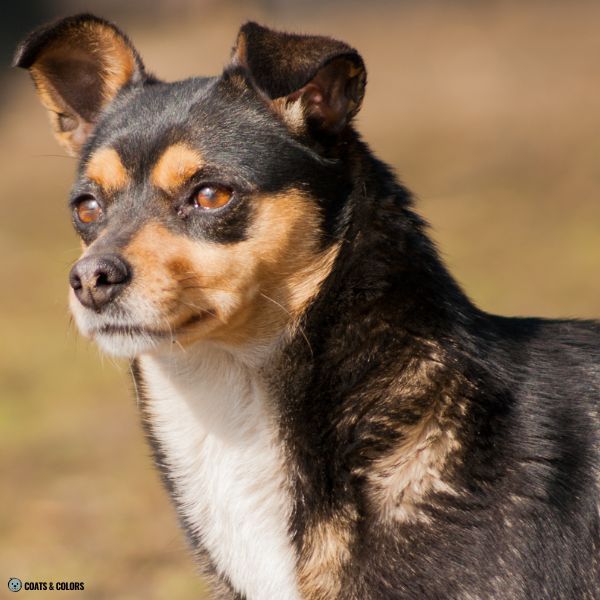
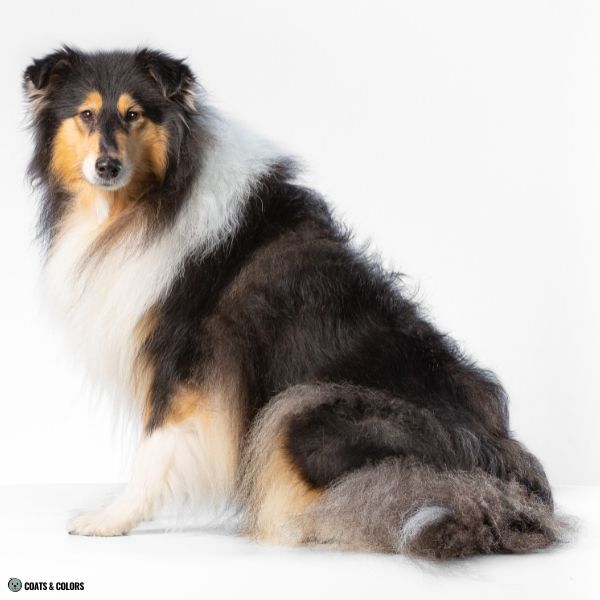
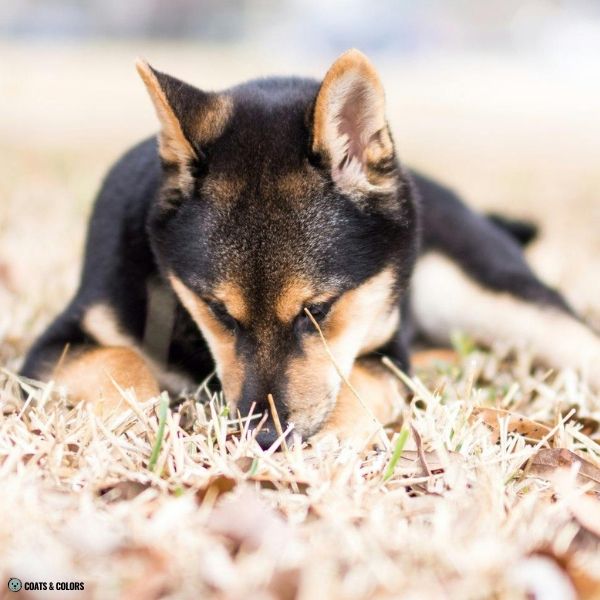
Some dogs have “running tan” where the tan markings grow larger than average and start to gradually blend into the black areas. This can cause lighter tan spectacles surrounding both eyes.
The tan can grow even further until the tan eye spots connect to the tan cheeks.
However, the exact cause of running tan is not known. But lighter ventral tan goggles surrounding the eyes are also very normal for the wild-type agouti pattern.

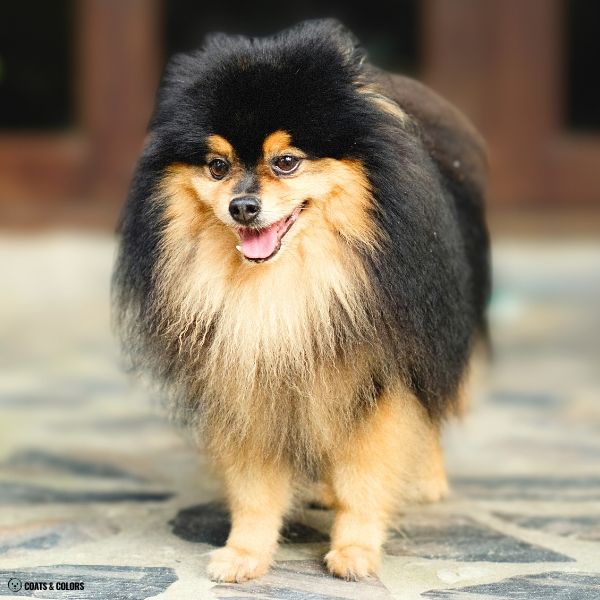



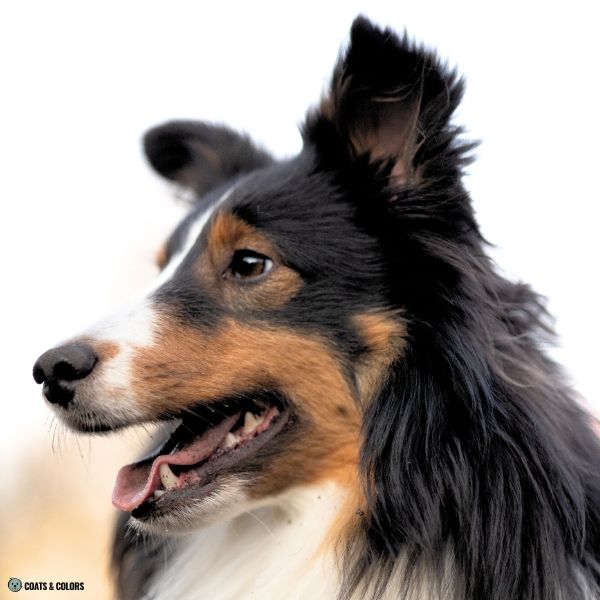
The tan on the lower legs can grow upwards until it reaches the stifles and shoulders.
Heavily extended “running tan markings” can resemble a creeping tan pattern.



Some dogs with a black and tan pattern have weak nose pigment.
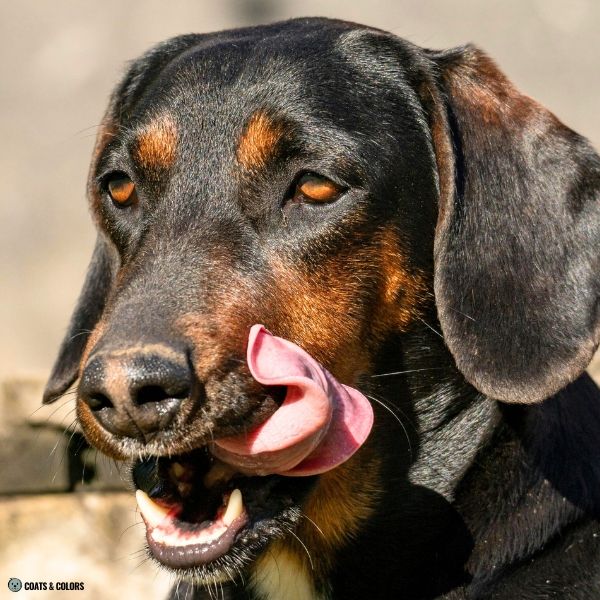

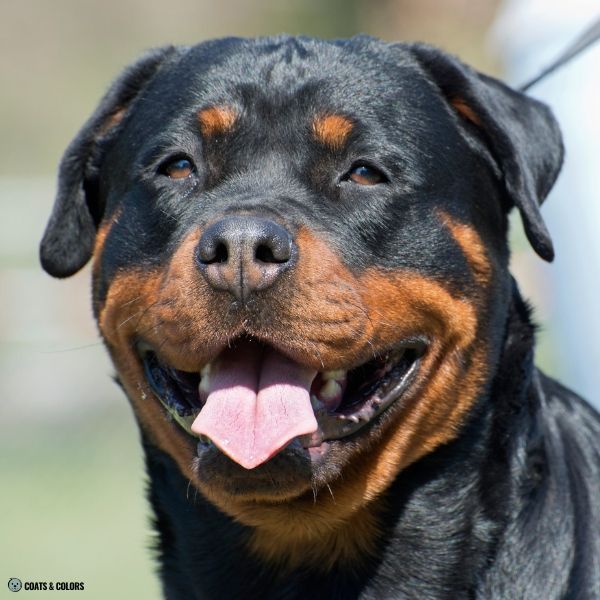
Black & Tan Puppy Coat
Newborn black and tan puppies can look almost solid black at first.
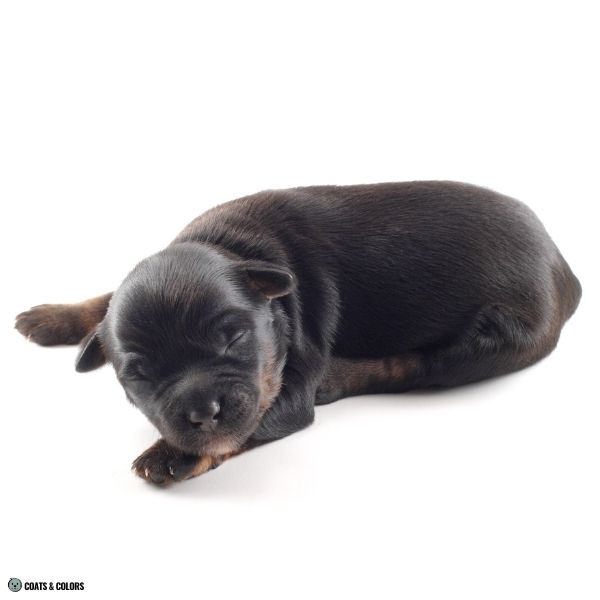
But soon, tan will be visible under the tail and on the legs and face.
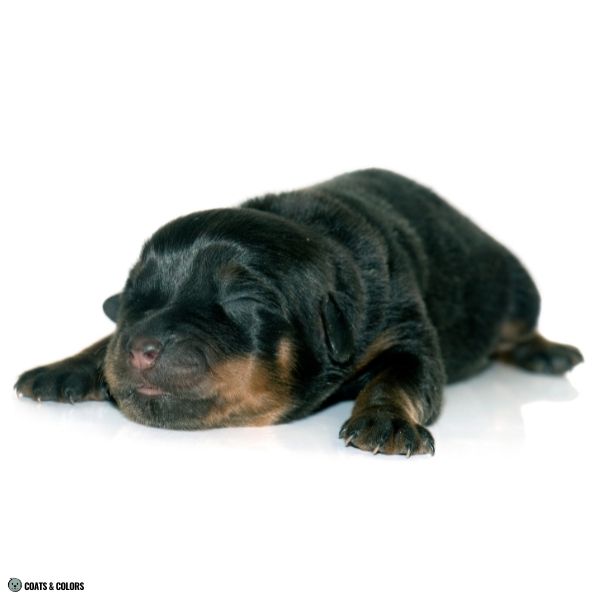
It can take some time for all the black overlay to clear from the tan markings.

Breed Terms
Black and tan is a very common pattern in purebred dogs[2,3].
In fact, some breeds exclusively come in this pattern. Just think of Rotties or Gordon Setters or Manchester Terriers. The Black and Tan Coonhound even has the pattern in its breed name!
Dobermans call it black with rust markings. In Poodles, the pattern is called phantom.
But most breeds simply call a black-based tan point pattern “black & tan“.
(A few breeds use “black and tan” for a saddle pattern.)
A black and tan pattern combined with extended white and heavy ticking is often called blue. Some examples are Australian Cattle Dogs or hunting dogs like the Bluetick Coonhound.
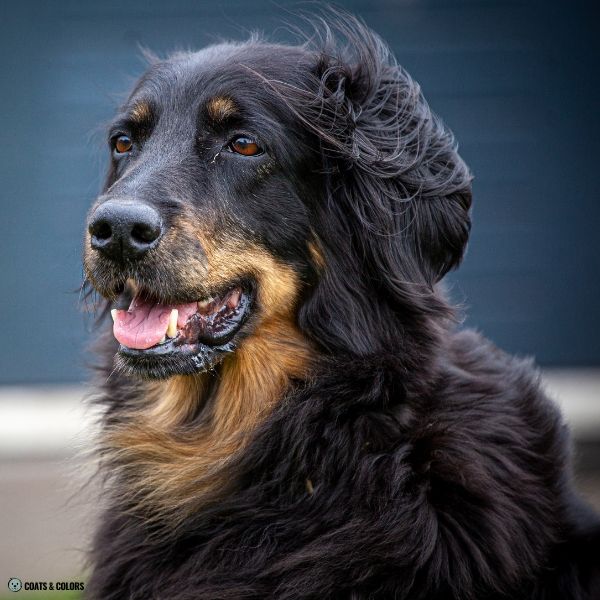
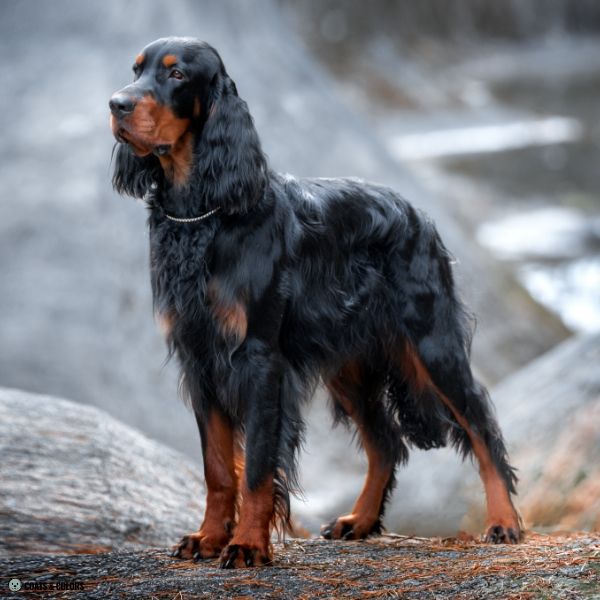

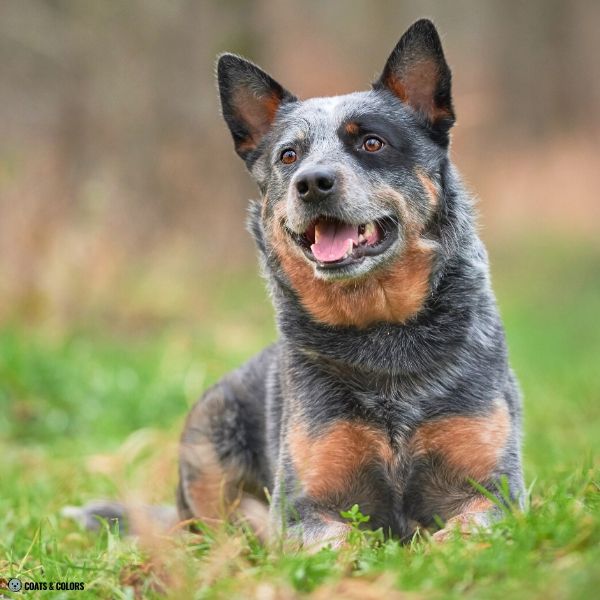
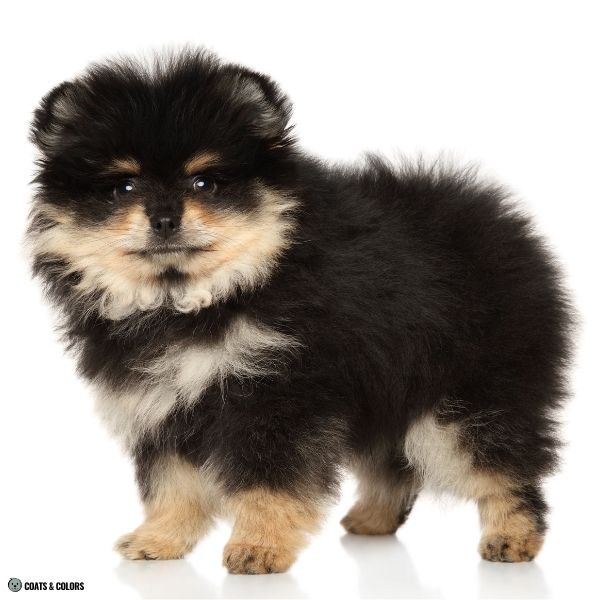
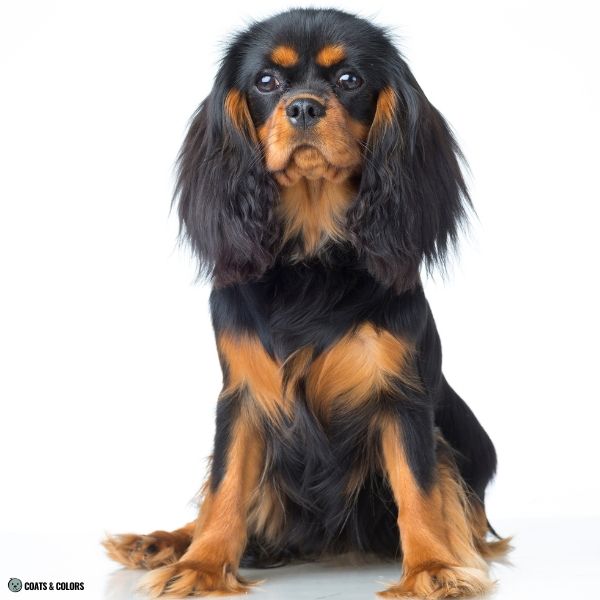
Black and tan can also happen as a mismark.
The tan point allele is recessive to most other A locus patterns. And the at variant occurs at low frequencies in many traditionally not-black-and-tan breeds[1].
For example, the Cane Corso breed got it from crossbreeding with Rottweilers a long time ago. Black and tan also happens, albeit very rarely, in Boxers or Malinois or Great Danes and many others.
Other breeds introduced tan point to produce new “fancy patterns“. One example might be black & tan French Bulldogs which is not a standard pattern in Frenchies.

Black & Tan Variations
Some other traits can affect how a black-based tan point pattern will look like.
- Dogs with a black and tan pattern can have any coat type or texture, of course.
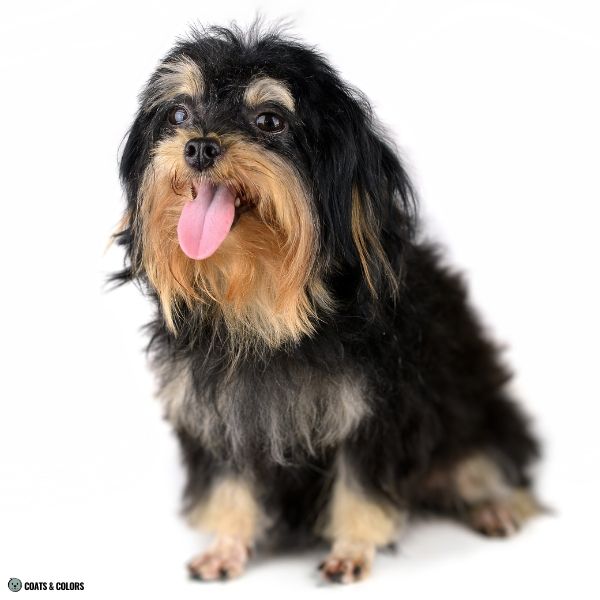
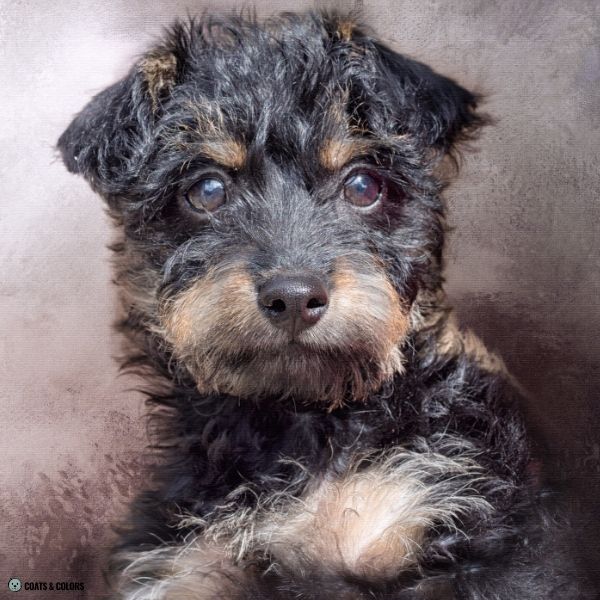
- Some countershading can partially lighten the phaeomelanin of all tan markings.
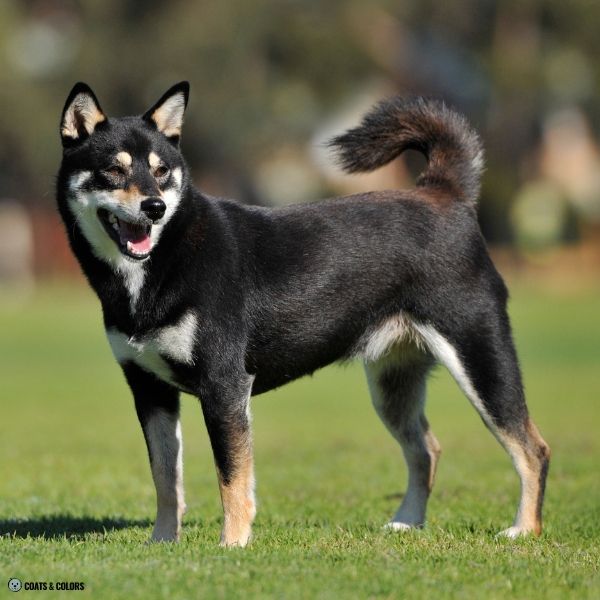
- White markings can cover some or most of the black & tan pattern. Dogs with a sizeable amount of white in their pattern are commonly called “black tricolor” or “black tri“.
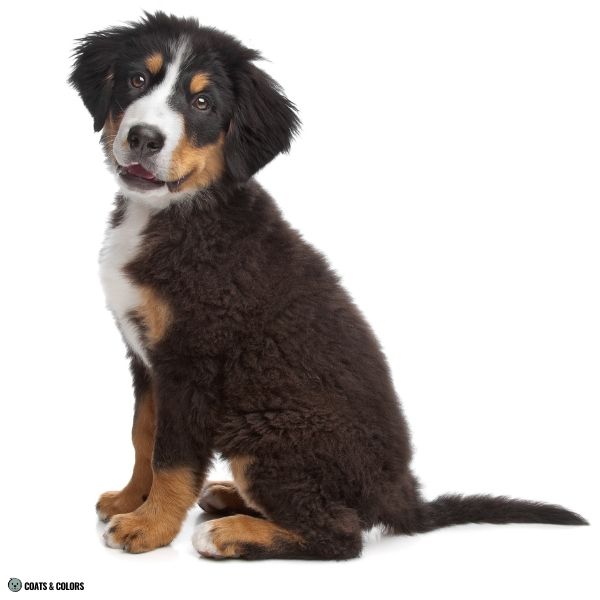
- Black and tan dogs with an Em variant will have a black mask. Their mask can be big or small and may fully or partially cover some of their face and chest tan markings.

- Brindle will turn a black and tan point dog into a black and brindle point.

- Many merle breeds come with a black and tan coat. Just think of Australian Shepherds or Shelties. Most merle alleles can only affect the black eumelanin portion of the pattern. Only stronger allelic combinations can also affect the tan areas or delete pigment to white.
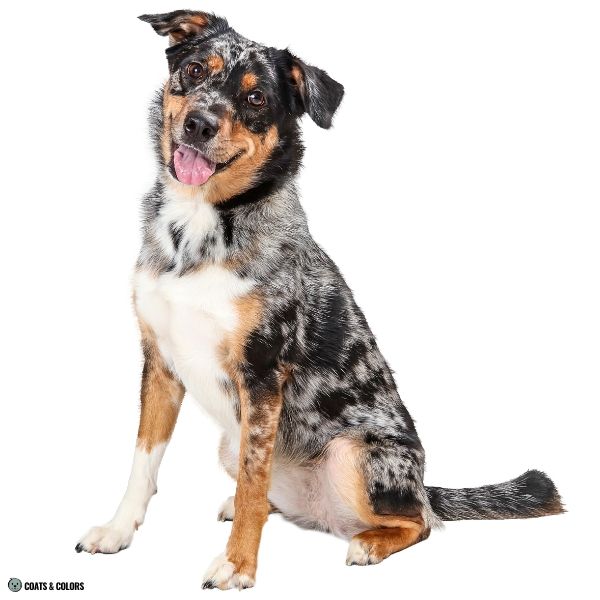
- Progressive graying can cause eumelanin fading in bearded dogs, e.g. in Poodle mixes. This lightens the black hairs to a grayish color over time, often starting at the face.

- Domino traits such as Northern domino or Grizzle Domino can reduce the black in any pattern. It gives white whiskers and may also lighten the phaeomelanin and give paler hair roots or lighter undercoat. Dogs with a tan point domino pattern often have just a residual nose bar and way less black under their eyes. Tan point domino puppies are born with very pale and very big points.

Black & Tan Look-Alikes
Some dogs have “ghost tan“.
This happens in some dominant black dogs if the black is not able to properly hide their hidden A locus pattern. In KB/- at/- dogs, the hidden tan markings bleed through the black coat.
These bleed-through ghost patterns can be very faint or very loud in individual dogs. They often produce a weird dull orangey markings instead of normal tan.
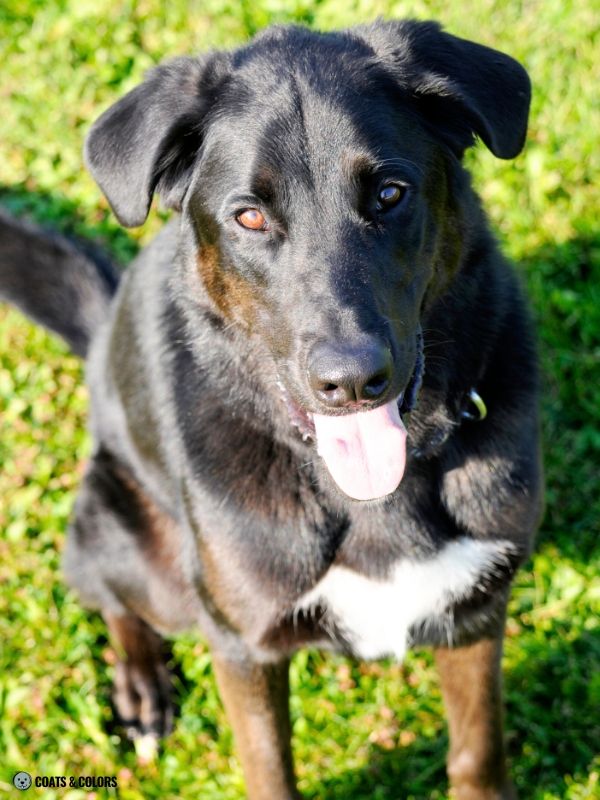
Another mechanism that can turn a solid black dog into a patterned dog is dominant black combined with domino (KB/- eA or KB/eG). This can give very different results, one of which are sooty tan points.
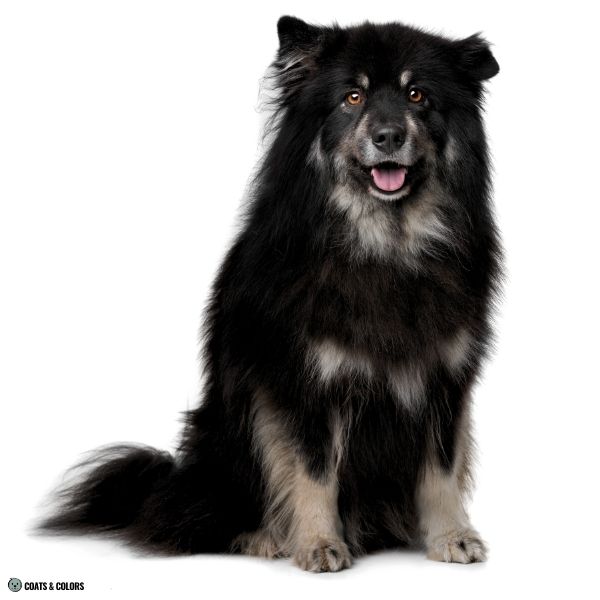
Some breeds like Aussies use the term “creeping tan” for tan bleed-through in their black and tan dogs. Just keep in mind that others use “creeping tan” for a saddle-type pattern.
A real black and creeping tan pattern only happens in dogs that have just one copy of a saddle allele while running tan can happen in dogs that are homozygous for tan points (at/at).
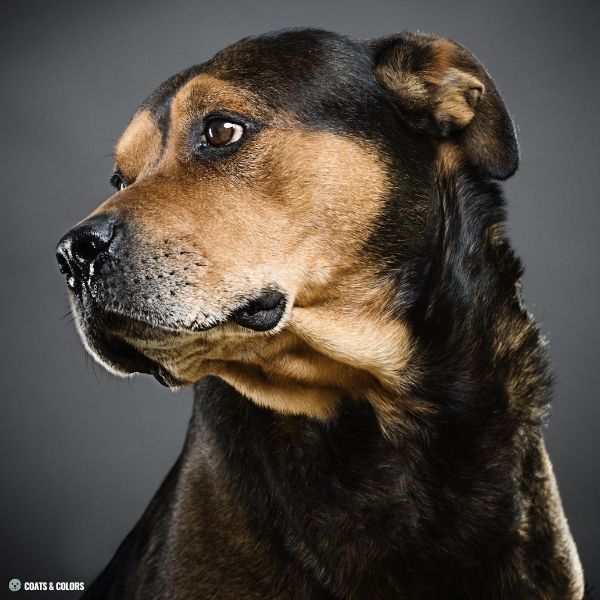
Some dogs with recessive black (kbr/- a/a or ky/ky a/a) show tan-bleed-through. This often limited to the lower legs which can resemble a masked tan point pattern (Em/- ky/ky at/-).
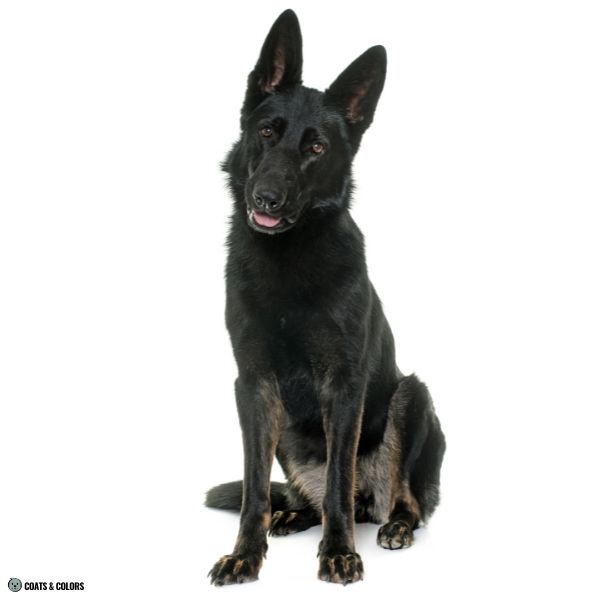
The tan markings on a black and tan dog are derived from the agouti wild type markings. The darker an agouti dog (more likely but not limited to aw/at or aw/a dogs) the more it resembles a black and tan coat. And some very dark sable puppies may also show false points.

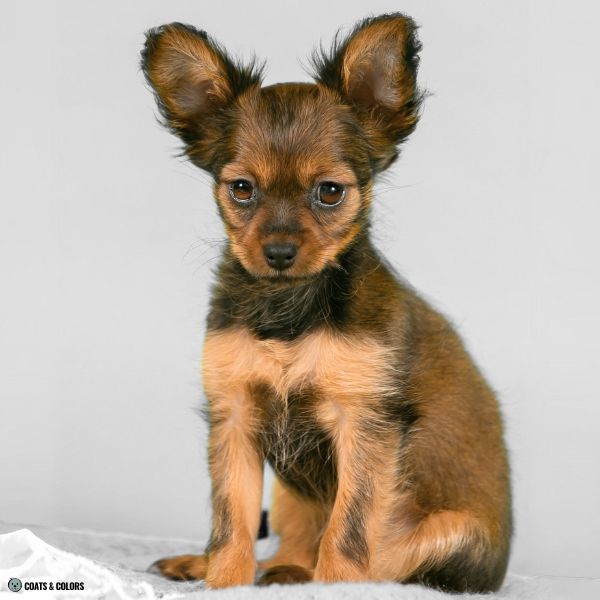
Black & Tan Genetics
Coat colors are determined by pigment distribution and pigment colors.
Pigment Distribution
The A locus, K locus and E locus determine the basic pigment distribution.
-
B/-
D/--
at/--
ky/ky-
Em/--
black & tan
mask
-
-
E/--
black & tan
-
-
-
-
A locus
First of all, dogs with a black and tan pattern have a tan point variant (at) at their A locus.
K locus
To actually express their A locus pattern, they also need to be homozygous for the wild-type K locus (ky/ky).
With a brindle allele (kbr/-), their tan markings will have black stripes on top.
E locus
Finally, the E locus also has to enable normal pattern expression.
Black and tan dogs can have a black mask (Em/-) or they can have a wild-type allele (E/-).
Pigment Colors
Black and tan dogs have black eumelanin but they can have any shade of phaeomelanin.
Eumelanin
All of the eumelanin in a black-based tan point pattern will be black (B/- D/-).
Intensity
The shade of phaeomelanin can vary depending on red intensity.
The Tan Point Allele
In the wild-type A locus, the agouti pattern, dogs have an overlay of banded hairs. This happens when pigment cells alternate between eumelanin and phaeomelanin synthesis during hair growth.
Tan Point is essentially a mutant version of the wild type pattern with switched off phaeomelanin banding. All hairs on the dog that should be banded will be mostly black.
The gene variant responsible for a tan point pattern is found at the A locus.
Legacy testing reports both a saddle and a tan point pattern as at.
Only newer testing methods (see UC Davis) can distinguish between these patterns.
ASIPDY > Ays
ASIPSY > aw
ASIPAG > asa
ASIPBS > at
ASIPBB > a
ASIPa
With newer testing, each A locus allele represents a haplotype of a hair cycle promoter (HCP) and a ventral promoter (VP). Black and tan dogs are VP2 combined with either HCP3, HCP4, or HCP5.
The VP2 promoter is responsible for their clear tan markings.
The HCP3,4,5 promoters switch off hair banding. In this case, dogs don’t alternate between pigment types but have (more or less) solid black hairs on their upper body.
The HCP3,4,5 promoters are “broken versions” of the agouti HCP2 promoter that is responsible for hair banding. Think of it this way: Tan points are “black and tan” whereas agouti is “banded and tan“.
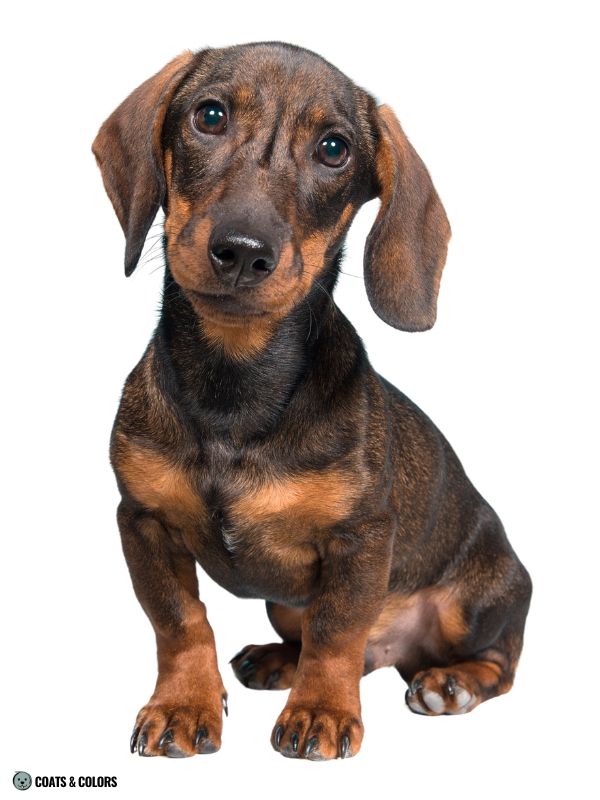
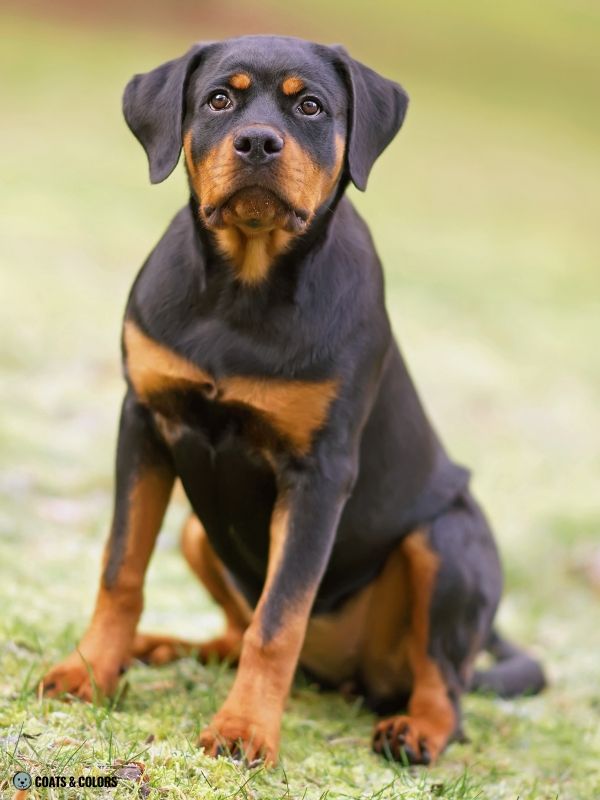
Black and tan dogs are either ASIPBB1, ASIPBB2, or ASIPBB3 but will still look the same. Not all companies test for all these versions. Dogs that come back as aw/- but have tan points are likely at/-.
Learn More
Links
[1] Dreger et al. (2019). True Colors: Commercially-acquired morphological genotypes reveal hidden allele variation among dog breeds, informing both trait ancestry and breed potential. PLoS ONE 14(10): e0223995. https://doi.org/10.1371/journal.pone.0223995
[2] American Kennel Club (AKC): Dog Breeds Overview.
[3] Fédération Cynologique Internationale (FCI): Dog Breeds Overview.
Image Credits
© cvalle/yayimages.com

Hi! I’m Steffi. I am a biologist and a big time dog nerd. You are curious about coat color genetics? You’ve come to the right place! Read more.



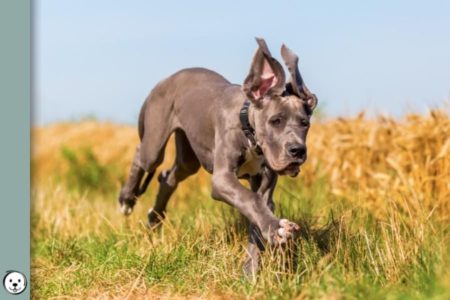



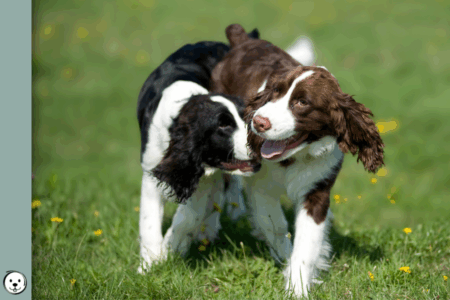
1 thought on “Black & Tan”
Comments are closed.